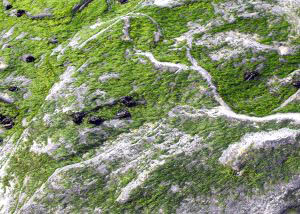
Dr. Alex Thomasson has developed an optical-electronic sensor that will automatically measure algae growth stages and allow micro-management of its production of oils for biofuels.One of the main advantages of using algae for biofuel is its rapid growth potential, Thomasson explained. The other advantage is that algae can be induced to produce large quantities of lipids – fatty molecules that can be used to produce a wide range of hydrocarbon fuels.
December 27, 2010

Algae grown for biofuel could be a sweet deal, but without constant monitoring, its growth process can be inefficient and economically untenable, according to a Texas AgriLife Research expert.
Dr. Alex Thomasson, AgriLife Research engineer, has developed an optical-electronic sensor that will automatically measure algae growth stages and allow micro-management of its production of oils for biofuels.
One of the main advantages of using algae for biofuel is its rapid growth potential, Thomasson explained. The other advantage is that algae can be induced to produce large quantities of lipids – fatty molecules that can be used to produce a wide range of hydrocarbon fuels.
Both the amount and type of lipids that algae produces depend upon how well the growth processes of the micro-algae are regulated. However, the very speed at which some algae grow – some strains may double their mass every six to 12 hours – makes management tricky, he said.
"Very rapid measurements will be required when scaling up to commercial production of algae as a biofuel feedstock," Thomasson said.
Most algal-oil production scenarios consist of two stages, he said. The first stage involves promoting optimal growth so that the number of algal cells increases rapidly. The second stage requires limiting nutrients at exactly the right time to maximize lipid production by the cells.
"This is a natural response of many organisms; as their nutritional intake is reduced, they tend to convert more of their nutrients to stored energy, such as lipids or fat, to protect against future starvation," Thomasson said. "In fact, a process-control system is necessary in both production stages to ensure that inputs and durations are optimal.” To help solve this problem Thomasson headed a team comprised of himself, Dr. Ruixiu Sui, a U.S. Department of Agriculture engineer in Mississippi, plus Dr. Yufeng Ge, an assistant research engineer, and Yao Yao, a graduate research assistant, both at Texas A&M University at College Station.
Thomasson and the team agreed that measuring optical density of algal cells as they grew in water was the most straight-forward and readily achievable way to go, he said.
"(In research situations) optical density is typically measured by collecting a sample of aqueous solution, taking the sample to the laboratory, and using a spectrophotometer to measure the absorbance of the sample at a specific wavelength," Thomasson said. "OD probes are available and could potentially be incorporated into a process control system, but those currently on the market had not been proven to be of acceptable accuracy, ruggedness, etc., for a process-control system for open-pond algae production."
To be suitable for commercial production, the optical sensor needed to be mountable at a fixed location in a production facility, operate without human intervention and provide measurements that could be used to adjust production in "real time," Thomasson explained in a paper the team presented at the 2010 annual meeting of the American Society of Agricultural and Biological Engineers last summer.
Real time is a computer science term for systems that function instantaneously or nearly so.
In addition to all of the above parameters, Thomasson thought it a good idea not to take measurements in just one wavelength of light as did the laboratory tests. Multiple measurements at different wavelengths would ensure increased reliability, he said. Therefore, the team experimented with wavelengths ranging from 250 nanometers to 2,500 nanometers, from the ultraviolet through infrared.
After successfully comparing sensor results to actual lab analyses, the team designed, constructed and tested a prototype sensor on an algae-production raceway in June 2010. The sensor took measurements at five-second intervals. Field tests at the AgriLife Algae Research and Development Facility near Pecos showed the prototype sensor could "very accurately" and consistently measure the optical density in the raceway and therefore enable real-time growth management, Thomasson said.
Because the team has applied for a patent, the actual wavelengths used are subject to intellectual-property protection, Thomasson said. But he could disclose that one wavelength in the near-infrared region was used to accurately measure the slow-and-steady increase of optical density during the growth process, as well as the drop in optical density when more water and nutrients were added.
You May Also Like



